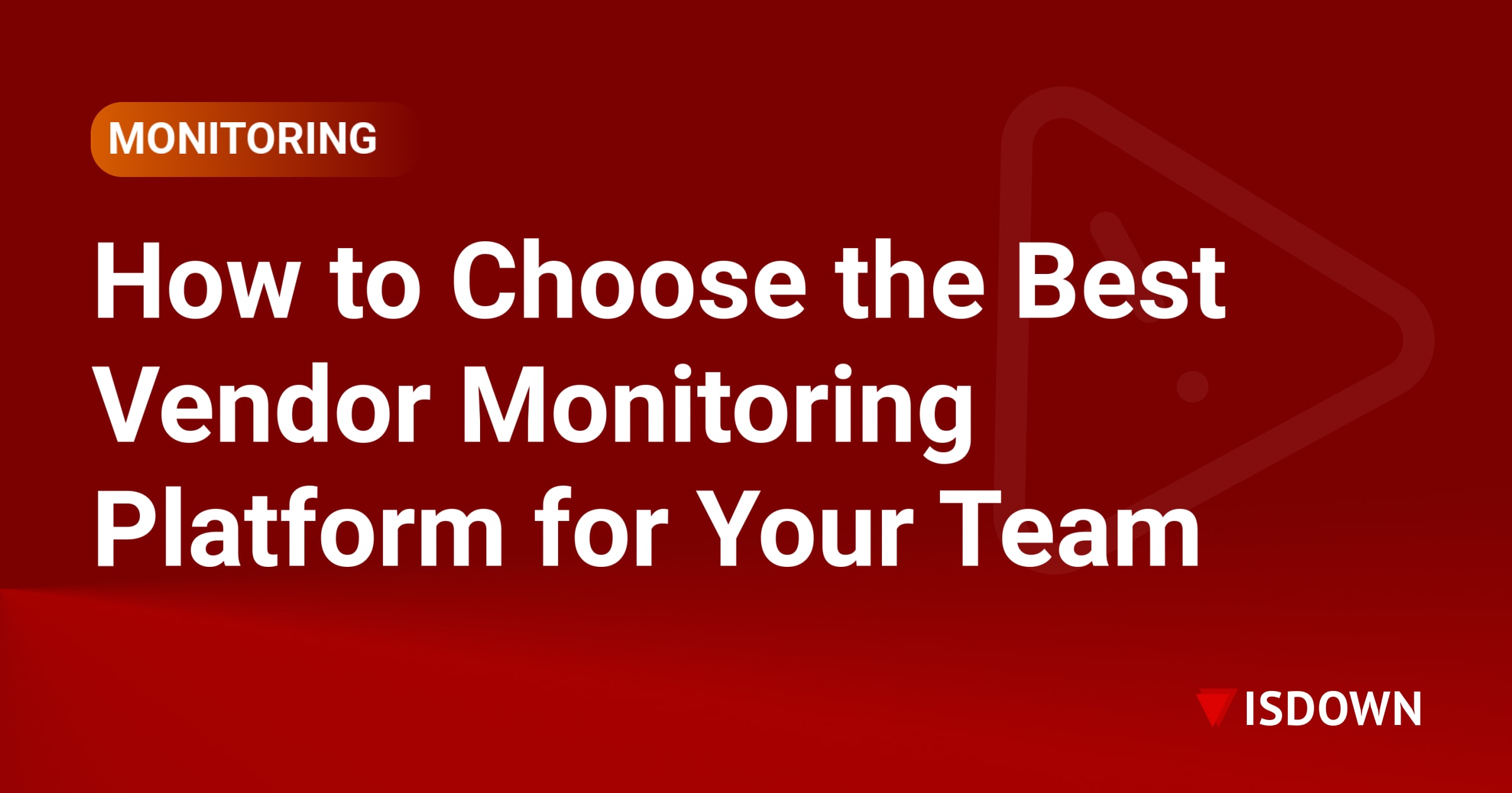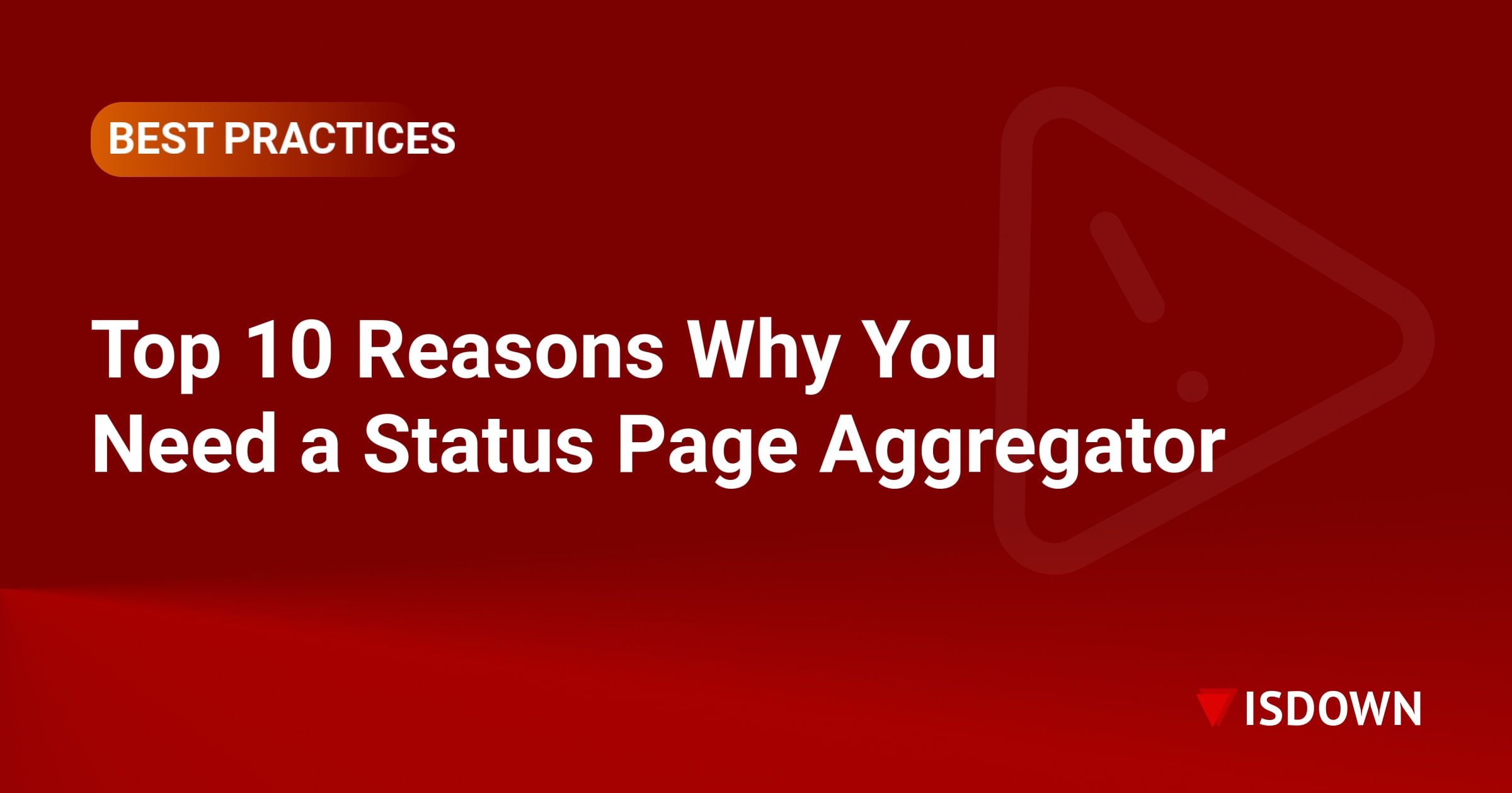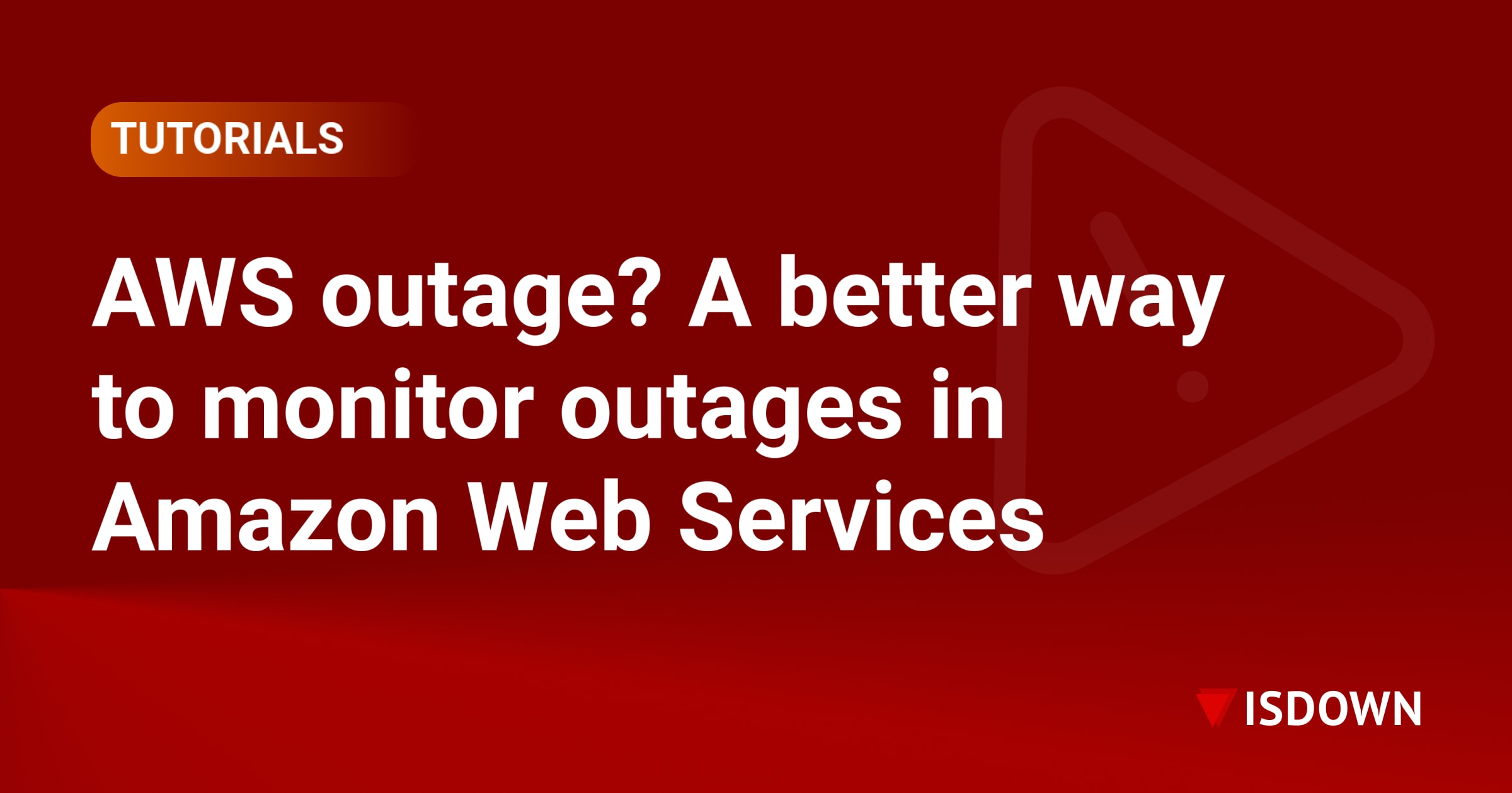How to Choose the Best Vendor Monitoring Platform for Your Team

Modern businesses rely on dozens of third-party services to operate effectively. When AWS goes down, your application might crash. When Stripe has issues, payments fail. When Slack experiences an outage, team communication grinds to a halt.
Vendor monitoring platforms help you track the health of these critical dependencies before they impact your operations. But with numerous options available, selecting the right platform requires careful evaluation of your team's specific needs and workflows.
Understanding Vendor Monitoring Platforms
Vendor monitoring platforms track the status of third-party services your business depends on. They aggregate information from various sources including official status pages, social media reports, and direct API monitoring to provide real-time alerts when vendors experience issues.
These platforms differ from traditional uptime monitoring tools that focus on your own infrastructure. Instead, they watch external services beyond your control but critical to your operations.
Key Features to Evaluate
When evaluating vendor monitoring platforms, focus on features that directly impact your team's ability to respond to third-party incidents:
- Real-time alerting: The platform should notify you immediately when vendors report issues, not hours later
- Multiple data sources: Look for platforms that combine official status pages with community reports and direct monitoring
- Integration capabilities: Your chosen tool should connect with your existing incident management and communication tools
- Historical data: Access to past outage patterns helps predict future issues and plan accordingly
- Custom vendor support: The ability to monitor vendors without public status pages
- Alert customization: Configure notifications based on severity, affected services, or specific components
Assessing Your Team's Requirements
Before comparing platforms, document your specific monitoring needs:
- Critical vendors: List all third-party services essential to your operations
- Team size and structure: Consider who needs access and what roles they'll have
- Response procedures: Map out how your team currently handles vendor incidents
- Budget constraints: Determine what you can realistically spend on monitoring
- Technical expertise: Evaluate your team's ability to configure and maintain the platform
Integration with Your Tech Stack
The best vendor monitoring platform seamlessly fits into your existing workflows. Essential integrations to consider:
- Incident management tools: Platforms like PagerDuty, Opsgenie, or Better Stack for automated incident creation
- Communication channels: Slack, Microsoft Teams, or email for team notifications
- Ticketing systems: JIRA, ServiceNow, or similar tools for tracking vendor-related issues
- Monitoring dashboards: Grafana, Datadog, or custom solutions for unified visibility
IsDown, for example, offers direct integration with Better Stack, allowing teams to bring third-party incidents into Better Stack automatically.
Evaluating Platform Reliability
Your vendor monitoring platform must be more reliable than the services it monitors. Consider these factors:
- Uptime track record: Check the platform's own status history
- Infrastructure redundancy: Multiple data centers and failover capabilities
- Data accuracy: How quickly and accurately the platform detects real incidents
- False positive rate: Frequent false alarms lead to alert fatigue
Cost Considerations
Vendor monitoring platforms typically offer tiered pricing based on:
- Number of monitored vendors
- Team members with access
- Alert volume and channels
- Historical data retention
- API access and custom integrations
Calculate the total cost including setup time, training, and ongoing maintenance. Compare this against the potential cost of missing critical vendor outages that could impact your business operations.
Implementation Best Practices
Once you've selected a platform, follow these steps for successful implementation:
- Start with critical vendors: Monitor your most important dependencies first
- Configure smart alerts: Set up notifications that matter, avoiding alert overload
- Document procedures: Create runbooks for common vendor incident scenarios
- Train your team: Ensure everyone understands how to use the platform effectively
- Regular reviews: Periodically assess which vendors to monitor and adjust alert settings
Making the Final Decision
Choose a vendor monitoring platform that:
- Covers all your critical third-party services
- Integrates with your existing tools and workflows
- Provides reliable, timely alerts without overwhelming your team
- Fits within your budget while delivering clear value
- Offers room to grow as your vendor dependencies expand
Remember that effective downtime communication with your own customers often depends on quickly identifying vendor issues. The right monitoring platform helps you stay ahead of problems and maintain trust with your users.
Frequently Asked Questions
What's the difference between vendor monitoring and uptime monitoring?
Uptime monitoring tracks your own infrastructure and applications, while vendor monitoring focuses on third-party services you depend on but don't control. Vendor monitoring helps you understand when external services like payment processors, cloud providers, or SaaS tools experience issues that could affect your operations.
How many vendors should we monitor?
Start by monitoring vendors that directly impact your core business functions or customer experience. This typically includes payment processors, authentication services, critical APIs, and infrastructure providers. As you become comfortable with the platform, expand monitoring to include secondary vendors that affect internal operations.
Can vendor monitoring platforms prevent outages?
Vendor monitoring platforms cannot prevent third-party outages since you don't control these services. However, they provide early warning of issues, allowing you to implement workarounds, communicate with customers proactively, and minimize the impact on your business operations.
What should we do when a vendor has an outage?
When alerted to a vendor outage, first verify the issue's scope and impact on your services. Implement any available workarounds or failovers, communicate the situation to affected stakeholders, and document the incident for future reference. Use the vendor's status page for updates and estimated resolution times.
How do vendor monitoring platforms detect outages?
Most platforms use multiple detection methods including monitoring official status pages, analyzing social media reports, performing synthetic checks on vendor APIs, and aggregating user reports. This multi-source approach helps detect issues faster and more accurately than relying on a single data source.
Is vendor monitoring necessary for small teams?
Even small teams benefit from vendor monitoring if they rely on critical third-party services. A payment processor outage or authentication service failure can severely impact small businesses. Vendor monitoring helps small teams respond quickly despite limited resources, potentially preventing significant revenue loss.
 Nuno Tomas
Founder of IsDown
Nuno Tomas
Founder of IsDown
The Status Page Aggregator with Early Outage Detection
Unified vendor dashboard
Early Outage Detection
Stop the Support Flood
Related articles
Never again lose time looking in the wrong place
14-day free trial · No credit card required · No code required




